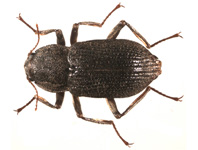Abstract
The presence of Gryne orensis (Sørensen) (Opiliones: Cosmetidae) in a Yungas locality (northwestern Argentina) is reported for the first time, providing new evidence for the Mesopotamian-Yungas disjunct pattern. Combining a total of 19 new Mesopotamian records with previous, reliable citations from the literature, a dataset of 45 points was used to model the potential distribution of the species, using the presence-only methods BIOCLIM and MAXENT. Models supported the existence of a distributional gap across the Semiarid Chaco. The imprecise literature record from “El Impenetrable”, province of Chaco, is assigned to three tentative locations to evaluate if models are affected by their inclusion; in all cases, the disjunction was maintained. It was thereby estimated that the actual record might have originated in a site closer to the Humid Chaco and/or associated to streams. This paper also provides a statement of the bioclimatic profile and identification of major environmental constraints that define the range of G. orensis.

